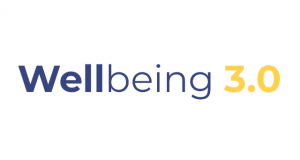

Four ways leaders can cultivate a more positive, supportive culture
“No matter how hard the past, you can always begin again” — BUDDHA
The start of a new year is an opportunity to reflect on the past year’s highs and lows — gain insight — and intentionally launch the next 12 months with positivity, hope and purpose. Yet another wave of COVID, the omicron variant, attempts to thwart hope and keeps us languishing in limbo, draining our energy and positivity.
It’s also normal, at this time of year, to experience feelings of doubt as we are faced with continually challenging situations. Self-doubt1 that feeling of uncertainty regarding one or more aspects of our self is something that we all may experience at certain times in our lives. However, when it becomes debilitating for us, that’s when we may need more tools to overcome self-doubt.
Self-doubt can have a significant negative effect on someone’s self-esteem and persistent self-doubt is not addressed, it can lead to:
• Anxiety
• Depression
• Procrastination or lack of motivation
• Emotional instability
• Low self-esteem
• Difficulty making decisions
How can we take back control and navigate to a more positive mindset, one which will create more meaningful impacts in our lives in the coming months? Take a moment, pause and begin your 2022 plan for how you want to show up each day to live a more Purposeful life, day by day — week by week — month by month.
Connecting to and strengthening your life purpose may be the best resolution you can make this year.
Reconnect to your Purpose: In with the New! Grab a pen and paper and see if your current life purpose could use some revising. Reflecting on the degree to which we understand our values and motivations, helps us to use them as our inner GPS (Google maps) to better navigate life and guide our decisions. Our purposes in life aren’t fixed and permanent things; they can evolve and change as we — and our circumstances — do. It’s never a bad time to check in with your goals and consider tweaking or refining them. Find a quiet place to sit with a pen and paper. Jot down what you think your current purposes in life are — who and what matters most to you, what brings you joy and meaning, and which goals you’ve been pursuing. Do they still fit who you are? If not, you’re free to rewrite your story.
Start each day positively: Start each day with a positive routine. Intentionally set an attitude goal for the day. Waking up to an uplifting note or a positive routine can set the right tone for the rest of the day. Write a positive affirmation on a piece of paper and set it out every night on your nightstand, bathroom mirror or place you’ll see first thing when waking; Look in the mirror and tell yourself that today will be a good day; Make a positive playlist and listen to it in the shower. Research suggests our brains have evolved with a bias toward negativity, as a defense mechanism. Rather than grapple directly with bad thoughts, concentrate on something else before they gain a foothold. Nip those gloomy thoughts in the bud by redirecting your attention to something — anything — else. Call a friend. Play Sudoku. Go for a walk. Physical activities have the added benefit of the feel-good hormones they produce.
Practice self-compassion: Managing anxiety and self-doubt can drain energy and create more negativity. Remember you’re often your harshest critic. When that internal critical voice is holding you back from some aspect of your life, it is important to remember that we are all human. We all make mistakes along the way and it’s okay to do so. Mistakes are how we learn and grow. Reflect on yesterday and be mindful of what worked and what didn’t and make plans to learn and grow from what didn’t go well. We can mitigate self-doubt and fear of failure by practicing being kind to ourselves, no matter the outcome.
Celebrate what’s right with your life: The little things in life matter so much and you should take a moment each day to be grateful for each good thing in your life. Remembering past achievements can help in both self-doubt and positivity as most often these are born out of initial uncertainty or doubt. It helps to remind ourselves about the times that things have gone right, and apply that to present moment. Consider creating 2 lists. A ‘Strengths’ list and a ‘Successes’ list. Strengths may include creativity, caring, or staying calm under pressure. ‘Successes’ may be achieving a new certification, raising great kids, achieving a challenging goal, or visiting all 50 states. List those things that make you feel good and celebrate what’s right with your life!
Check for faulty assumptions: Be ever mindful of your thinking. It is sometimes hard to recognize negative thoughts that creep in because we have become so used to them. Check if these thoughts are based on facts or are they cognitive distortions3 —exaggerated patterns of thought not based on facts. These consequently lead you to view things more negatively than they really are. Everyone falls into cognitive distortions on occasion. It’s part of the human experience. This happens particularly when we’re fatigued or feeling down. Next time these thoughts persist, take a moment and ask yourself if you really believe that they are true. Consider how positive thinking may shift your mindset and allow you to be more confident in your abilities.
Create a weekly bucket list: You may consider that instead of resolutions — to stop doing things — that often are not achieved — you instead create a bucket list of things that will bring you more joy and meaning. A list of 52 mini goals that week by week you can check off to help you create greater meaning in your life. Growing more positive habits that are aligned with your purpose can help you move you away from the expedient or negative habits that are no longer benefiting you.
Research4 shows that positivity can make a real difference to our success and well-being — Positivity increases our ability to think creatively, to progress in our careers, to cope with challenges, and to work with other people. It can reduce absenteeism and staff turnover, and lead to more satisfied and productive teams. In short, it’s an essential ingredient for success! Positive emotions can make us more creative and flexible over time. The more positive emotions we experience the more likely we become to exhibit other positive behaviors, such as curiosity, awareness and innovation – and this applies to groups, as well as individuals.
How can leaders cultivate a more positive, supportive culture?
1. Start with Yourself: Teams often become more motivated when they have a positive leader. This is why focusing on your own happiness, well-being, and emotional intelligence is the first step toward creating a great team. The PERMA model developed by Seligman5 highlights five essential elements:
- Positive emotion
- Engagement
- Positive Relationships
- Meaning
- Accomplishment/achievement
Research has shown significant positive associations between each of the PERMA components and physical health, vitality, job satisfaction, life satisfaction, and commitment within organizations.6
2. Remove Obstacles to Positivity: As a leader, you can help remove barriers to positivity in your team. Frederick Herzberg, 7 a psychologist, discovered that employee satisfaction and dissatisfaction are not opposites. In other words, simply removing the causes of dissatisfaction will not, in itself, increase satisfaction. Instead, for your team members to be truly happy in their jobs, you must first eliminate the causes of dissatisfaction (the “hygiene factors”), and then add the “motivators” that produce satisfaction. Motivation factors include: challenging work; recognition for one’s achievements; responsibility; the opportunity to do something meaningful; involvement in decision making; and a sense of importance to the organization.
3. The Power of Dignity in the Workplace: According to scholar Andrew Sayer,8 dignity is a fundamentally social phenomenon that arises through interaction. It involves recognition and trust, as well as autonomy and self-mastery. Kumanu’s own research with the Harris Group suggests that being treated with dignity is one of the top drivers for Work Outcomes such as Engagement and Retention Intent as well as Mental Health Outcomes such as Depression, Anxiety, & Sleep Disturbance. Dignity and respect are two very powerful words that are key in developing a culture of employee engagement, positivity and an environment in which everyone feels valued.
4. Reinforce Positivity: Positivity is a habit, and the best way to cultivate it in your team is to reinforce. Allowing team members a degree of autonomy is a proven way to build confidence and positivity. Celebrating successes, milestones and “small wins” reinforce the valuing of each member of the team. Staying positive isn’t always easy. A team member’s negative outlook can impact the entire group. Language shapes our world, influencing our thoughts, feelings, and outlook. The Betari Box is a useful tool that explains how a person’s attitude and behavior can affect the people around them. You can use it in a one-on-one with your negative team member, to show how his or her attitude is affecting the group. Approach the situation with sensitivity and respect though as there may be deeper issues that contribute to his or her negative behavior.

Research shows that gratitude and appreciation contribute to a positive team climate and a higher trust and engagement level — an environment in which team members value one another’s contributions, care about one another’s wellbeing, and have input into how the team carries out its work.
We all have the ability and opportunity to cultivate gratitude. Simply take a few moments to focus on all you have –appreciate what’s right in the world around you. Developing an “attitude of gratitude” is one of the simplest ways to gain more meaning and satisfaction with life.
References
References:
1. Self-Doubt: https://www.goodtherapy.org/learn-about-therapy/issues/self-doubt
2. 7 Ways to Remove Toxic People From Your Life: https://www.delawarepsychologicalservices.com/post/7-ways-to-remove-toxic-people-from-your-life
3. Stuck in the Negatives? 15 Cognitive Distortions To Blame: https://psychcentral.com/lib/cognitive-distortions-negative-thinking#definition
4. The Benefits of Frequent Positive Affect: Does Happiness Lead to Success? https://psycnet.apa.org/record/2005-15687-001
5. PERMA and the building blocks of well-being: https://ppc.sas.upenn.edu/sites/default/files/permawellbeing.pdf
6. Kern, M. L., Waters, L., Adler, A., & White, M. (2014). Assessing employee wellbeing in schools using a multifaceted approach: Associations with physical health, life satisfaction, and professional thriving. Psychology, 5(6), 500- 513.
https://doi.org/10.4236/psych.2014.56060
7. Herzberg’s Motivation Two-Factor Theory: https://www.simplypsychology.org/herzbergs-two-factor-theory.html
8. Sayer A. Dignity at Work: Broadening the Agenda. Organization. 2007;14(4):565-581. https://journals.sagepub.com/doi/abs/10.1177/1350508407078053
About the Author

Robert Carr, MD, MPH, FACPM
Chief Medical Officer, Kumanu
Robert Carr was most recently Senior Vice President & Corporate Medical Director at GlaxoSmithKline and on the faculty at Georgetown University. He received his Doctor of Medicine from the University of Miami School of Medicine and his Masters of Public Health and Preventive Medicine Residency from the John Hopkins Bloomberg School of Hygiene and Public Health. Bob also served as the President of the American College of Preventive Medicine
Stay on top of the news
Subscribe today and receive our Reimagining Wellbeing newsletter delivered to your inbox every month!
